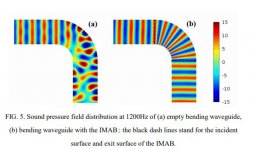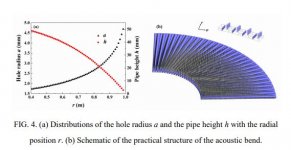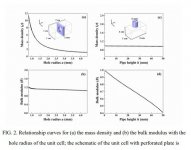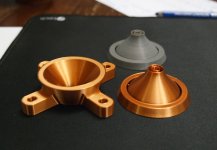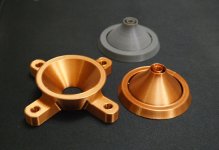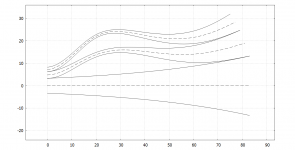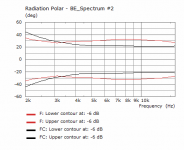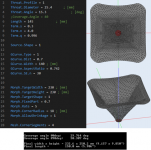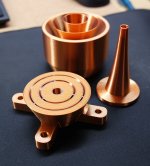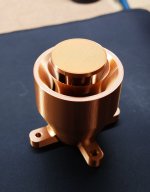I agree with dr.Geddes,
Improving the loading in the lower end helps with distortion, but is not the main purpose of the experiment as far as I'm concerned.
It is the forming of a spherical wavefront that is interesting.
And I wonder if the effects of introducing bends cold be overcome by having such a structure inside of the plug. (Tho the experiment in the paper suggests a flat "pipe"...
Improving the loading in the lower end helps with distortion, but is not the main purpose of the experiment as far as I'm concerned.
It is the forming of a spherical wavefront that is interesting.
And I wonder if the effects of introducing bends cold be overcome by having such a structure inside of the plug. (Tho the experiment in the paper suggests a flat "pipe"...
Attachments
That's an ideal spherical wave corresponding to the given throat angle. I still think it's the best bet for a driver with a conical exit, but as long as we are only guessing the real exit wavefront (above ~ 13 kHz for a 1" driver), anything will be about equally "good".Has anyone ever gathered experiences with a waveguide which was designed with the "Source.Shape = 1" parameters, how the finished waveguide complied to the simulated response, especially the HF?
Last edited:
Do we really need anything else? So far I don't see a problem with the bends, as long as they are narrow enough so that the propagating waves are "1P" (I don't know a better description for it) - as the simulations suggest, then the wavefront simply follows and stays more or less normal to the centerline (and to the walls). Again, if the channels are narrow enough.And I wonder if the effects of introducing bends cold be overcome by having such a structure inside of the plug. (Tho the experiment in the paper suggests a flat "pipe"...
Last edited:
You can create some really weird shapes this way. You can also combine it with the Morph.* feature which smoothly transforms any shape to have a rectangular mouth.
Hello mabat, thanks for the GCurve tip, I am close to my initial goal of designing a 60x40° constant directivity square horn (1st picture). However, if I want to keep these directivity properties I have to respect the coverage angles (2nd picture), and I end with a mouth width much larger than the mouth height. But as I want a square mouth, I tried the Morph feature and specified a 240x240mm target mouth shape, but when I run it I never obtain 240x240mm dimensions (3rd picture), even when trying to change other parameters.
The problem is that if I modify the aspect ratio to have a square mouth, I will no longer have these coverage angles and I will lose the directivity properties.
Do you think it's even possible to keep these directivity properties while having a square mouth ?
Many thanks
Attachments
It works in 4.7.2, please download the latest version (there was a bug in 4.7.0): ATH - Advanced Transition Horns
(For this particular case you can just overwrite the file ath.exe with the new version).
A general note: It's probably not a good idea to morph to a smaller mouth size. In your case, the initial mouth size without the morph feature is 232.6 x 250.2 mm, so the Morph.Target* dimensions should not be smaller. If you want a smaller size in any of the dimensions, you should adjust the other parameters to give you a smaller mouth as the first step.
(For this particular case you can just overwrite the file ath.exe with the new version).
A general note: It's probably not a good idea to morph to a smaller mouth size. In your case, the initial mouth size without the morph feature is 232.6 x 250.2 mm, so the Morph.Target* dimensions should not be smaller. If you want a smaller size in any of the dimensions, you should adjust the other parameters to give you a smaller mouth as the first step.
Sorry, no plans for rectangular throats.Are there any plans for rectangular sources? I would be interested in it for AMT's.
- The last photos before I start doing something useful with it
(Here with a centering thorn.)
mabat, brilliant.
- Home
- Loudspeakers
- Multi-Way
- Acoustic Horn Design – The Easy Way (Ath4)
